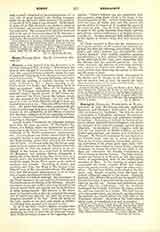

Kenraghty (KIMRACHA, KINRECHTIN, or MAKEN-RACHTUS; in Irish MACIONNRACHTAIGH, anglicized HANRATTY and ENRIGHT), Irish priest, d. April 30, 1585, at Clonmel, Co. Tipperary. He was the son of a silversmith at Kilmallock, embraced the ecclesiastical state, studied abroad, and graduated bachelor in theology. Returning to Ireland, he became chaplain to Gerald, sixteenth Earl of Desmond, and shared the fortunes of his patron’s struggle against Queen Elizabeth. In September, 1583, a fugitive with the earl, he was surprised on Sliabh Luachra by Lord Roche’s gallowglasses, and handed over to the Earl of Ormond. By Ormond’s command he was chained to one Patrick Grant, and sent to prison at Clonmel. Here he lay in irons, exhorting, instructing, and hearing confessions at his prison grate until April, 1585. His jailer was then bribed by Victor White, a leading townsman, to release the priest for one night to say Mass and administer the Paschal Communion in White’s house on Passion Sunday. The jailer secretly warned the President of Munster to take this opportunity of apprehending most of the neighboring recusants at Mass. In the morning an armed force surrounded the house, arrested White and others, seized the sacred vessels, and sought the priest every-where. He had been hidden under straw at the first alarm, and, though wounded when the heap was probed, ultimately escaped to the woods. Learning, however, that White’s life could not be saved but by his own surrender, he gave himself up, and was at once tried by martial law. Pardon and preferment were offered him for conforming; but he resolutely maintained the Catholic Faith and the pope’s authority, and was executed as a traitor. His head was set up in the marketplace, and his body, purchased from the soldiers, was buried behind the high altar of the Franciscan convent. He is one of the Irish martyrs whose cause of canonization is now in progress.
CHARLES MCNEILL

